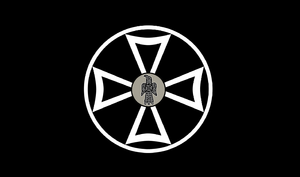Acrean Empire: Difference between revisions
Jump to navigation
Jump to search
No edit summary |
No edit summary |
||
| Line 12: | Line 12: | ||
|event_end = Dissolved | |event_end = Dissolved | ||
|date_end = | |date_end = | ||
|year_end = | |year_end = 990 CE<sup>1</sup> | ||
|image_flag = [[File:AcreanImperialFlag.png|300px]] | |image_flag = [[File:AcreanImperialFlag.png|300px]] | ||
|image_map = | |image_map = | ||
| Line 45: | Line 45: | ||
}} | }} | ||
The '''Acrean Empire''', also called the '''Empire of Acre''', was a kingdom in [[Eracura]] which grew to become an empire and the dominant state on the continent for nearly a millennium. It was established by | The '''Acrean Empire''', also called the '''Empire of Acre''', was a kingdom in [[Eracura]] which grew to become an empire and the dominant state on the continent for nearly a millennium. It was established by [[Eirik the Great]] in 990 CE, following his victory in the [[Acrean Civil War]]. The Empire served as the home of the [[Nordic peoples]], today one of the largest ethnic groups in the [[Tyran]]. The Acrean Empire achieved continental hegemony by the mid-3rd century CE, spanning from coast to coast. | ||
==Etymology== | ==Etymology== | ||
Revision as of 12:14, 4 March 2022
Acrean Empire Norðriget | |
|---|---|
| 482 BCE–990 CE1 | |
| Capital | Acrea |
| Common languages | Old Nordic Gothic Latin |
| Religion | Asuryan |
| Demonym(s) | Acrean |
| Government | Absolute Monarchy |
| King | |
| Historical era | Antiquity to Medieval |
• Established | 482 BCE |
• Dissolved | 990 CE1 |
| Currency | Mark |
| Today part of | Venetian Principality |
| |
The Acrean Empire, also called the Empire of Acre, was a kingdom in Eracura which grew to become an empire and the dominant state on the continent for nearly a millennium. It was established by Eirik the Great in 990 CE, following his victory in the Acrean Civil War. The Empire served as the home of the Nordic peoples, today one of the largest ethnic groups in the Tyran. The Acrean Empire achieved continental hegemony by the mid-3rd century CE, spanning from coast to coast.
